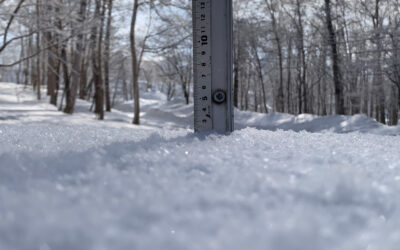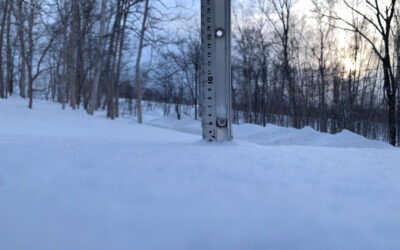This is the third month of collecting radiation dose data (Gamma mSv) using a DoesRAE 2 Electronic Dosimeter and our October results show the radiation levels in the Niseko area are still well below global averages.
We update the publicly available spreadsheet frequently and will continue to take readings throughout the 2011/12 winter season. If you have any questions, suggestions or feedback feel free to add a comment below.

Our data is licensed under a Creative Commons Attribution-ShareAlike 2.5 Generic License. Feel free to copy, distribute and transmit the work, adapt the work and to make commercial use of the work if you do please credit us by linking back to our website.
The Hokkaido Government measures the radiation levels on a daily basis at multiple sites across the region and publish the results on this website. The closest monitoring station to Niseko is detailed in the second table, in the second row labelled as “Shiribeshi” and “Kutchan”.
Radiation in the air is not the only risk to human health and the level of radioactive caesium in the soil should also be considered. The Hokkaido Government have also been measuring the amount of caesium in agricultural farm land and have published the results from the findings as of 13 September 2011 on this page of their website.
To put that information into perspective we have taken the world wide average for caesium-137 from the second page of this document.
Assuming the worldwide average for caesium-137 is 0.4 pCi/g and the largest concentration found in Hokkaido is 10.3 Bq/kg we need to do some math to convert pCi to Bq using this conversion table to make this more meaningful.
“1Bq is equivalent to 27 pCi”
10.3/1000 (to get Bq per gram) = 0.0103 multiplied by 27(1Bq=27pCi) = 0.27pCi/g or to put it another way Hokkaido farm land has 32.5% less caesium-137 than the worldwide average.
This fills us with confidence about the safety of Hokkaido’s produce.
There are a number of businesses in the Niseko area who have also been doing there own research and support post the March 2011 earthquake and tsunami.
Ezo Seafoods have been out to meet their suppliers to check the seafood they buy is safe, find out more on their blog.
Taiga Projects were responsible for organising the Niseko Tsunami Relief Program that brought families from the Fukushima area to Niseko for the summer, it was hugely successful and testament to their organisational skills, read more about it on their blog.




